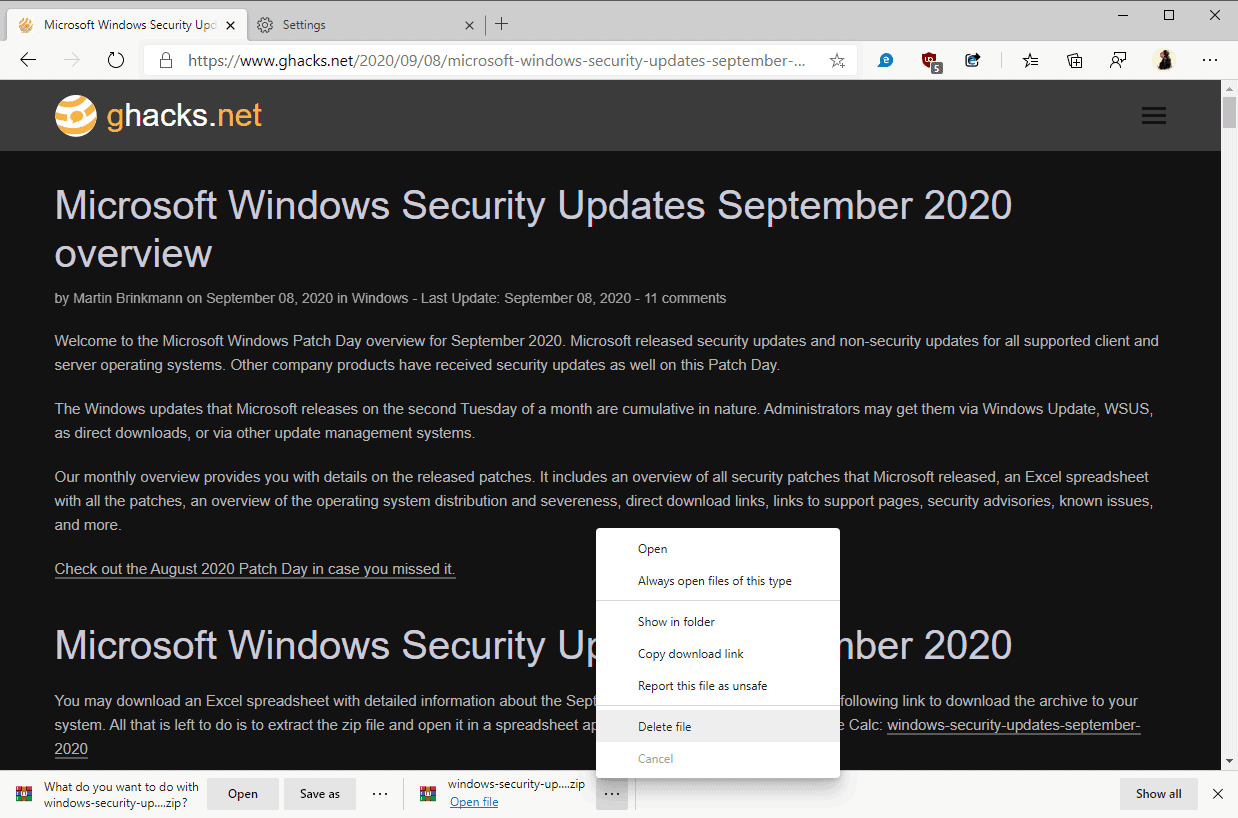

- #HOW TO MODIFY FILE DELETE OPTIONS IN MICROSOFT INSTALL#
- #HOW TO MODIFY FILE DELETE OPTIONS IN MICROSOFT UPDATE#
- #HOW TO MODIFY FILE DELETE OPTIONS IN MICROSOFT FULL#
- #HOW TO MODIFY FILE DELETE OPTIONS IN MICROSOFT WINDOWS#
With a click on “Unlock Selected Process” you can separate them from the file and delete them afterwards. Select the file or folder you want to delete, click File in the top menu bar, and select Delete. Double-click the folder containing the file you want to delete. On the right side of the screen, locate and double-click the local disk (usually C: or D:). In the Lockhunter that opens you can see a list of the processes that are responsible for the deletion lock. On the left side of the screen, click This PC. Then click on the file or folder you want to delete and select “What is locking this file?” from the context menu.
#HOW TO MODIFY FILE DELETE OPTIONS IN MICROSOFT INSTALL#
Method 3: Delete file/folder with Lockhunterįirst you install the freeware Lockhunter, which you can download here. If you still can’t delete the file or folder, the last method below will help you. To make the change permanent, you have to close this window as well by clicking “OK” or “Apply”. In the main window you can now see your account as “the owner of the file”.
#HOW TO MODIFY FILE DELETE OPTIONS IN MICROSOFT WINDOWS#
If you have a Microsoft account connected to Windows 10, this is the corresponding email address, otherwise just your normal user-name. There, just enter your user name in the white box. If you have administrator rights, you can click on “Change” on the right and set yourself as the owner.Ī dialog box will pops up. The owner of the file is shown at the top. In the properties dialog that appears, switch to the “Security”-tab and click on “Advanced”. Change permissions, Delete, and Delete subfolders and files options. To do this, start by right-clicking on the file or folder and selecting “Properties”. You can track who deleted files or folders on Windows File Servers, and also. Locate and then click the subkey that holds the registry item or items that you want to change. reg file, follow these steps: Click Start, click Run, type regedit in the Open box, and then click OK.
#HOW TO MODIFY FILE DELETE OPTIONS IN MICROSOFT UPDATE#
Be the first to get new Windows update and give us your feedback. To make changes to the registry and export your changes to a. As administrator you can set yourself as the owner which is called “taking ownership” in IT-lingo. If you are a Microsoft Learn Student Ambassador, register for Windows Insider Program. Some files/folders cannot be deleted by you as a user because another user is marked as owner. If someone else is managing your system as an administrator, you will need to contact them. your formatting option, Word, 48 Delay text box, PowerPoint, 480 Delete All. And across our services, you can adjust your privacy settings to control what we collect and how your information. If your user account does not have administrator rights, you will need to log in with an appropriate admin account. 447 Decrease Text Size option, 151 default file location, Save options. Publishing Author: Create and read items and files, create sub-folders, and modify and delete. The most common reason why you cannot delete a file is lack of user rights on the system. Editor: Create, read, modify, and delete all items and files. When youre done editing, click Save and return to Dropbox. I have managed to apply Deny Delete permissions but the Users cannot write to the folder i.e.
#HOW TO MODIFY FILE DELETE OPTIONS IN MICROSOFT FULL#
Method 1: Delete file/folder as administrator The file will open in your web browser in Office Online you can then edit it. Administrator must have full control I have tried options when logged in as an administrator to set up the folder and then going into Security>Advanced>Disable Inheritance> Convert to Explicit. With the following 3 methods you can still get rid of such files or folders. In some cases such files remain “marked” as open / “in-use” or you simply do not have the user-rights to delete them. That’s where some of the ‘user’ problems mentioned above occur.This might be quite annoying if you definitely don’t need the affected files/folders anymore, like in the case of files that had been used or created by an already uninstalled or removed software. Many users don’t fully read dialogs and habitually click ‘OK’. When a dialog, then the warning should have a distinctive icon so the user can instantly recognise what is happening. (Although a better way would be a type of Recycler that purged this type of file at log-off or with an explicit purge.) This situation does require a pause to think.

:max_bytes(150000):strip_icc()/06AutomaticDownloads-5c8fe57246e0fb0001f8d0b9.jpg)
Library directly to your computer), but once set-up Teams. If the file is being deleted, there’s no guarantee that the user can get the file back (even with good recovery software). Some options will require assistance from ICT Desktop Support (eg: linking the SharePoint document. It would be nice to show an alert telling inexperienced users that it went to the Recycler until they learned that. There’s no need for an explicit confirmation. If the file is heading for the Recycle Bin, it can be easily recovered (undone). For the sake of good user experience, programmers/managers need to think in the ‘Undo’ mindset. The ‘Are you sure?” (12 ms after clicking the button) mentality is lazy.


 0 kommentar(er)
0 kommentar(er)
